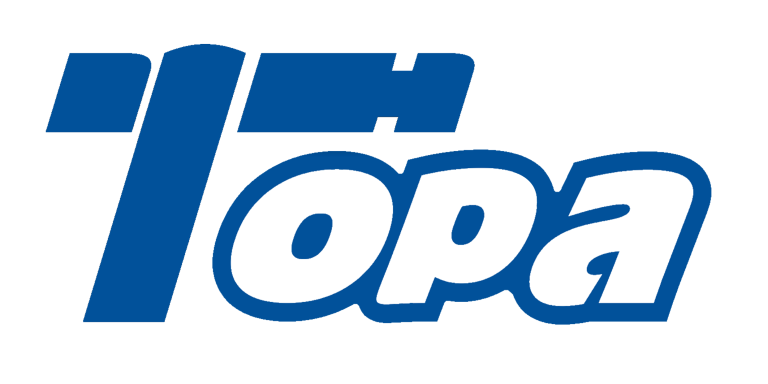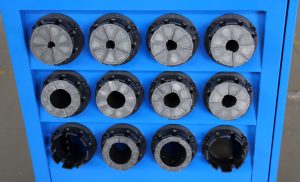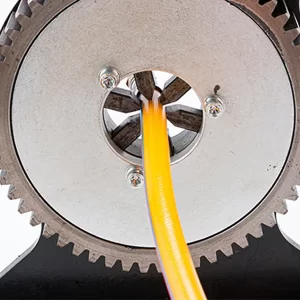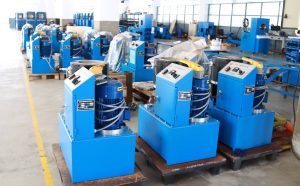1. Introduction: The Importance of Crimper Maintenance
A hydraulic crimper is more than just an essential tool in your workshop—it’s a powerhouse that ensures precise, durable connections between hoses and fittings. Yet, like any hydraulic equipment, it requires proper maintenance to perform at its best. Without regular care, even the most reliable hose crimping machine can face mechanical failures, leading to costly downtime and repairs. Imagine the frustration of a vital machine breaking down in the middle of a project, causing delays and financial losses. The good news is that with a few simple practices, you can keep your hydraulic hose crimping system running smoothly for years to come. In this guide, we’ll walk you through why maintenance matters and how to protect your investment with easy-to-follow tips that maximize its lifespan and performance.

1.1 Why Proper Maintenance Matters
Without routine care, even the highest-quality hose crimping equipment can begin to show signs of wear. From diminished crimping force to potential machine breakdowns, improper maintenance can cause a cascade of issues. When neglected, hydraulic hose connectors become vulnerable to contamination, pressure loss, and wear on key components, all of which lead to inefficiencies and expensive repairs. The good news? A consistent maintenance routine can prevent these issues, ensuring your hose assembly crimper continues to deliver optimal performance day after day.
1.2 Benefits of a Well-Maintained Hydraulic Hose Crimper
A well-maintained hydraulic crimper doesn’t just last longer—it works better. Regular maintenance ensures smooth operation, consistent crimping results, and prevents unscheduled breakdowns that could disrupt your workflow. But that’s not all: investing in proper care also reduces operational costs, lowers the likelihood of emergency repairs, and boosts productivity by preventing the frustration of unexpected downtime. In short, maintaining your hydraulic hose tools is an investment in both its longevity and your bottom line.
2. Understanding Your Hydraulic Hose Crimper
Before diving into the maintenance details, it’s essential to understand how your hydraulic crimper works. This knowledge will not only make maintenance easier but also ensure you’re aware of potential issues before they become problems.

2.1 What is a Hydraulic Hose Crimper?
A hydraulic crimper is a machine used to attach hydraulic hose fittings to hydraulic hoses by compressing them using hydraulic pressure. The process ensures a secure, leak-proof seal that is essential for the proper functioning of hydraulic systems. Hydraulic hose repair is often necessary when this process fails or when hoses become damaged, making this tool critical for maintaining the integrity of your system. Hydraulic equipment like this is used widely across industries, from manufacturing to construction, and it’s vital that your hydraulic press operates flawlessly for these high-pressure environments.
2.2 Key Components of a Hydraulic Hose Crimper
Understanding the key components of your hose crimping machine can help you maintain it properly. Common components include the crimping head, crimping dies, hydraulic pump, and control valves. The crimping head is responsible for applying the pressure needed to compress the hose fitting, while the hose crimper die set is designed to shape and size the fitting correctly. Regular inspection and care of these critical components prevent wear and ensure smooth operation.
2.3 How a Crimper Works: The Basics
At its core, a hydraulic hose crimper uses hydraulic force to apply pressure to the fitting and hose, creating a permanent bond. The hydraulic press tool generates high-pressure fluid, which is directed to the crimping head. The crimping dies inside the head are then pressed against the hose and fitting, deforming the fitting to securely hold the hose in place. This process must be performed with precision to ensure the fitting is properly attached and capable of handling the high pressures typical of hydraulic systems.
3. Daily Maintenance Practices
To keep your hydraulic crimping equipment in top shape, it’s crucial to implement daily maintenance practices. These quick checks and procedures can prevent small issues from becoming larger, more expensive problems down the road.
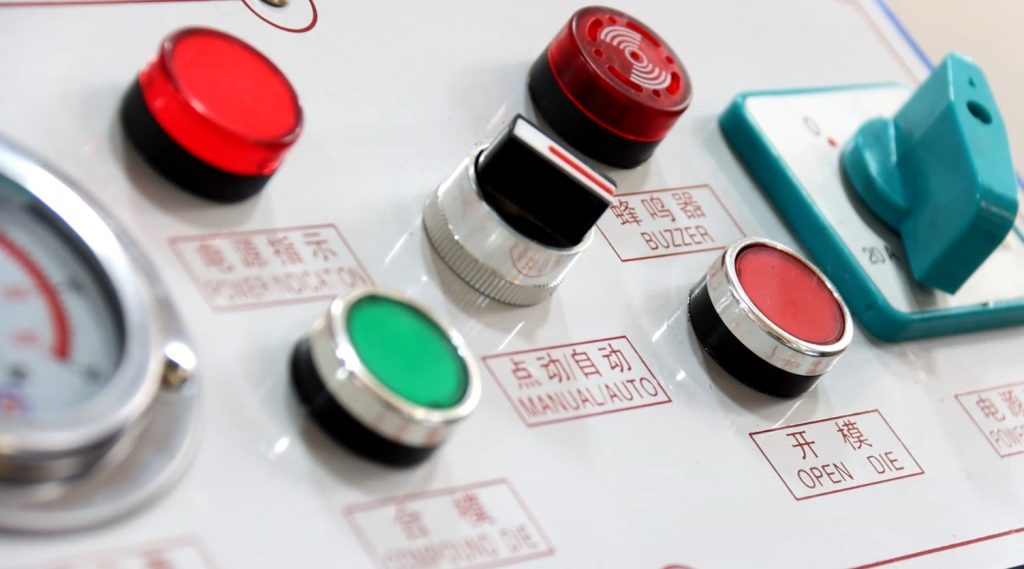
3.1 Checking for Leaks and Hydraulic Fluid Levels
Start your daily routine by inspecting the hydraulic system for any signs of leaks. Leaks not only reduce efficiency but also cause damage to the internal components. Additionally, check the hydraulic fluid levels to ensure they are within the recommended range. Low fluid levels can impair the crimping process and cause premature wear on critical components, including hose assembly crimpers and hose crimping tools.
3.2 Cleaning the Machine After Every Use
After each use, take the time to clean the machine thoroughly. Wipe down the crimping machine head, dies, and any other areas that may have come into contact with dust, debris, or hydraulic fluid. This prevents contamination, which can affect the machine’s performance over time. Using a lint-free cloth and mild solvent is often the best approach for cleaning.
3.3 Inspecting the Dies and Crimping Jaws
The crimping dies and crimping jaws are among the most critical components of your hydraulic hose press. Inspect them daily for signs of wear or damage. Worn dies can lead to inconsistent crimping quality, and damaged jaws can cause failures during operation. If you notice any issues, it’s important to address them immediately by replacing or repairing the parts as needed.
4. Weekly Maintenance Checklist
Weekly maintenance is designed to catch any issues that might not be apparent from daily use. These tasks ensure that the hydraulic hose tools remain in optimal working condition and that no hidden problems are developing.

4.1 Lubricating Moving Parts
Crimping tools have many moving parts that require regular lubrication. Check the manufacturer’s manual for lubrication points and the correct type of lubricant. A well-lubricated hose crimping machine will operate smoothly, reduce wear on parts, and extend the machine’s lifespan.
4.2 Inspecting Hydraulic Hoses for Wear and Tear
Hydraulic hoses themselves need inspection for any signs of wear, cracking, or swelling. Damaged hoses can compromise the hydraulic pressure and even cause dangerous blowouts. Replace any hoses showing signs of damage to avoid disruptions to your workflow and ensure the hydraulic crimping tool operates safely.
4.3 Verifying the Calibration
Over time, the calibration of your crimping machine for hydraulic lines may drift. This can lead to inaccurate crimping and diminished quality. A simple calibration check ensures that the machine is still set to the correct standards, preventing defects in the crimped hoses and fittings. Regular crimping machine calibration will ensure consistency and prevent faulty hose fitting crimp issues.
5. Monthly Maintenance Tasks
Monthly maintenance tasks are more thorough and often require additional time and resources. These checks are essential for identifying deeper issues before they become expensive repairs.
5.1 Full Cleaning and Deep Inspection
Once a month, conduct a more detailed cleaning. This includes disassembling the hose crimping equipment to clean areas that are harder to reach. Inspect the entire system for any internal damage, unusual wear, or misalignment that could affect performance.
5.2 Changing Hydraulic Fluid and Filters
Hydraulic fluid degrades over time due to heat, contamination, and general use. Once a month, check the fluid condition and replace it if it appears dirty or degraded. Similarly, replace the hydraulic filter to ensure proper fluid flow and prevent contaminants from entering the system. Clean hydraulic pressure tools and make sure the hydraulic crimping system remains fluid- and contaminant-free.
5.3 Checking Electrical Components and Wiring
Inspect the electrical components of the hydraulic crimper, including wiring and control panels, for any signs of wear or fraying. Faulty wiring can cause short circuits or malfunctions, leading to unexpected downtime and repair costs.
6. Annual Maintenance Procedures
Once a year, perform a comprehensive inspection and maintenance overhaul of your hose crimping machine. Annual maintenance ensures that every part of the machine is in top condition and ready for another year of heavy use.
6.1 Comprehensive Crimper Evaluation
A full evaluation of the hydraulic hose crimper includes checking all components—mechanical, hydraulic, and electrical systems. This thorough inspection should be done by a professional or experienced technician, who can identify potential issues that may not be apparent during routine checks.
6.2 Replacing Worn-out Parts
Over the course of a year, components like seals, hoses, and crimping dies naturally wear down. Annual maintenance is the time to replace these parts before they cause problems. Keep an eye out for signs of wear, including unusual noises or reduced performance, and replace any worn parts promptly.
6.3 Performing a Full System Overhaul
A full system overhaul involves replacing any aged components, recalibrating the machine, and upgrading any outdated parts. This will ensure that your industrial crimper is operating as efficiently as possible for the year ahead, minimizing future risks of breakdowns and hose crimping inaccuracies.
7. Troubleshooting Common Issues
No machine is immune to issues, but a well-maintained hydraulic hose press will often run into fewer problems. If your hydraulic hose tools are malfunctioning, here are a few common issues and troubleshooting tips.
7.1 Crimper Not Starting: What to Check
If the crimper refuses to start, check the power supply, hydraulic fluid levels, and any blown fuses. Often, hydraulic hose failure prevention can be as simple as inspecting these components to resolve the issue. Sometimes, a malfunctioning hydraulic crimp fitting process may be the cause, and simple fixes will get you back on track.
7.2 Poor Crimp Quality: Causes and Solutions
Poor crimp quality could be the result of worn-out crimping dies, incorrect calibration, or hydraulic hose swaging issues. Inspect the dies for damage, recalibrate the machine, and ensure that the hydraulic fluid is at the correct pressure to achieve consistent and reliable crimps.
7.3 Excessive Heat: How to Prevent It
Excessive heat is a common issue, especially during prolonged use. To prevent overheating, make sure the cooling system is functioning properly, avoid overloading the machine, and ensure the hydraulic fluid is clean and at the right level.
8. Best Practices for Storing Your Crimper
How you store your industrial hose crimping machine can impact its longevity. Proper storage helps prevent damage from environmental factors like dust, moisture, or temperature fluctuations.
8.1 Storing in a Dry, Clean Environment
Store your hose crimper in a clean, dry environment to avoid rust, corrosion, or debris buildup. Excess moisture and contaminants can damage the machine’s internal components and reduce its performance.
8.2 Protecting Against Dust and Debris
Cover your crimping machines for hoses when not in use to keep dust and debris from entering sensitive parts. This simple step reduces the chances of contamination and ensures your crimper remains in top condition.
8.3 Preventing Corrosion During Long-Term Storage
If you need to store your hydraulic hose crimper for an extended period, consider using rust inhibitors or protective coatings on metal parts to prevent corrosion. Regularly check the machine to ensure that it remains in working order.
9. Choosing the Right Hydraulic Oil for Your Crimper
The hydraulic oil you use plays a crucial role in maintaining the performance of your hydraulic crimper. Selecting the right oil and keeping it in top condition is vital for efficient crimping operations.
9.1 Importance of Using the Correct Hydraulic Fluid
Using the right hydraulic fluid ensures optimal pressure, minimizes wear on components, and helps maintain the machine’s performance. Always refer to the manufacturer’s guidelines to select the proper fluid.
9.2 Common Hydraulic Oils and Their Pros & Cons
Different hydraulic oils have varying properties. For example, mineral oils are commonly used due to their affordability, but synthetic oils offer better performance in extreme conditions. Understanding the pros and cons of each type will help you choose the best option for your hydraulic crimper.
9.3 How to Check and Replace Hydraulic Fluid
Regularly check the condition of the hydraulic fluid by inspecting its color and consistency. If the fluid is cloudy or dark, it’s time for a replacement. Ensure that you replace the fluid according to the manufacturer’s guidelines to maintain peak performance.
10. How to Extend the Lifespan of Your Hydraulic Hose Crimper
A little effort goes a long way when it comes to extending the life of your hose crimper. Following simple, consistent practices will keep your machine running smoothly for years.
10.1 The Role of Regular Inspections
Routine inspections are the cornerstone of extending the lifespan of your hydraulic crimping machine. By consistently checking key components like the hydraulic crimping tool care practices, you catch potential issues early. This proactive approach ensures that problems are addressed before they evolve into major, costly repairs, ultimately saving you time and money.
10.2 Timely Repairs and Replacements
Even with proper maintenance, parts will eventually wear out. The key to long-lasting equipment is making timely repairs and replacing components before they fail. This includes swapping out worn-out dies, seals, and hoses, as well as addressing any leaks or irregularities. Doing so not only maintains the crimper’s performance but also avoids costly downtime.
10.3 Proper Training for Operators
Your hydraulic crimper’s longevity is also influenced by how it’s operated. Operators who are properly trained understand how to use the machine effectively without putting unnecessary strain on it. Proper handling reduces the risk of mistakes, such as over-crimping or improper die selection, which can cause damage. Make sure your team is well-versed in the correct operational procedures and safety protocols to maximize the life of your equipment.
11. The Role of Manufacturer Support in Maintenance
Manufacturer support plays a crucial role in maintaining the longevity of your industrial hydraulic equipment. From warranty services to expert advice, having access to professional support ensures that your hydraulic hose crimper stays in top working condition.
11.1 Understanding Warranty and Service Agreements
Many hose crimping machines for hoses come with warranties and service agreements that cover parts and labor for a set period. Understanding the terms of your warranty is essential, as it can help you avoid unnecessary expenses on repairs. Some manufacturers may also offer extended support options for a nominal fee, giving you peace of mind that your hose crimping machine is covered in the event of a major malfunction.
11.2 When to Call for Professional Assistance
While regular maintenance can be performed by your in-house team, there are instances when professional help is necessary. If you notice a persistent issue that you can’t resolve, or if your hydraulic crimper is showing signs of complex mechanical failure, it’s best to call in a certified technician. Professional maintenance ensures that repairs are done correctly and that no further damage occurs to the machine.
11.3 How Manufacturer Resources Can Improve Longevity
Many manufacturers provide valuable resources, such as maintenance guides, troubleshooting manuals, and access to their technical support team. Taking full advantage of these resources can help you identify potential problems before they escalate and ensure that your hose crimping accuracy remains intact.
12. Conclusion: Keep Your Hydraulic Hose Crimper Running Like New
12.1 Recap of Key Maintenance Practices
Proper maintenance is the key to ensuring that your hydraulic hose crimper continues to deliver reliable, high-quality results for years. From daily inspections to annual overhauls, each step in the hydraulic crimp fitting process contributes to your crimper’s overall performance and longevity. Consistent care prevents costly breakdowns, enhances efficiency, and ensures you get the most out of your equipment.
12.2 Long-Term Benefits of Consistent Care
By following a structured maintenance schedule and investing time in proper upkeep, you can enjoy the long-term benefits of a well-maintained hose crimping machine. These include reduced downtime, fewer repairs, and consistent performance. In the end, the effort you put into maintaining your hydraulic hose crimper today will pay off by extending its life, enhancing its functionality, and saving you money in the long run. Your hydraulic crimper is a valuable asset—treat it right, and it will serve you well for years to come.
